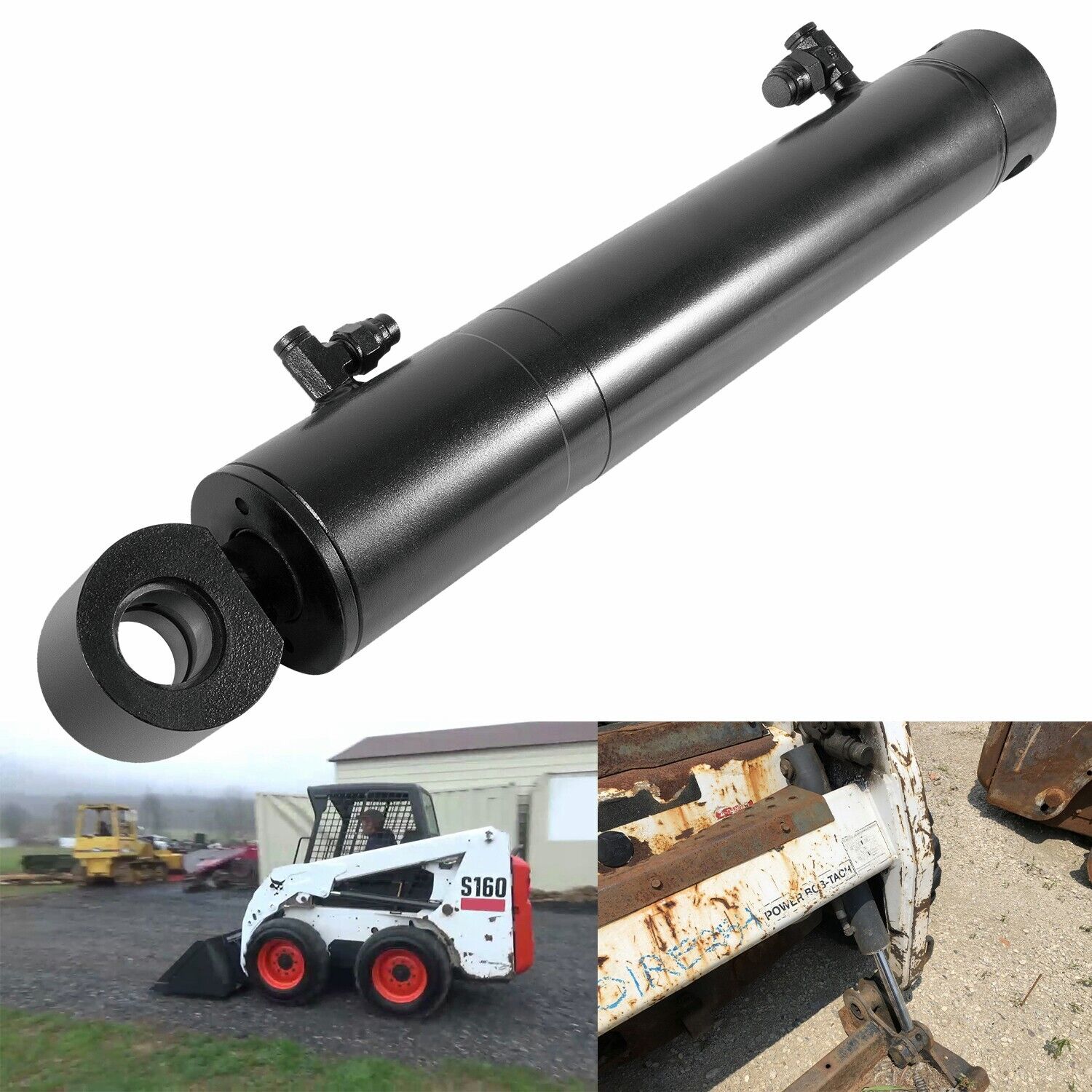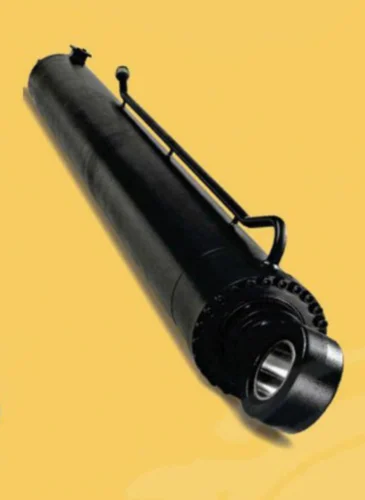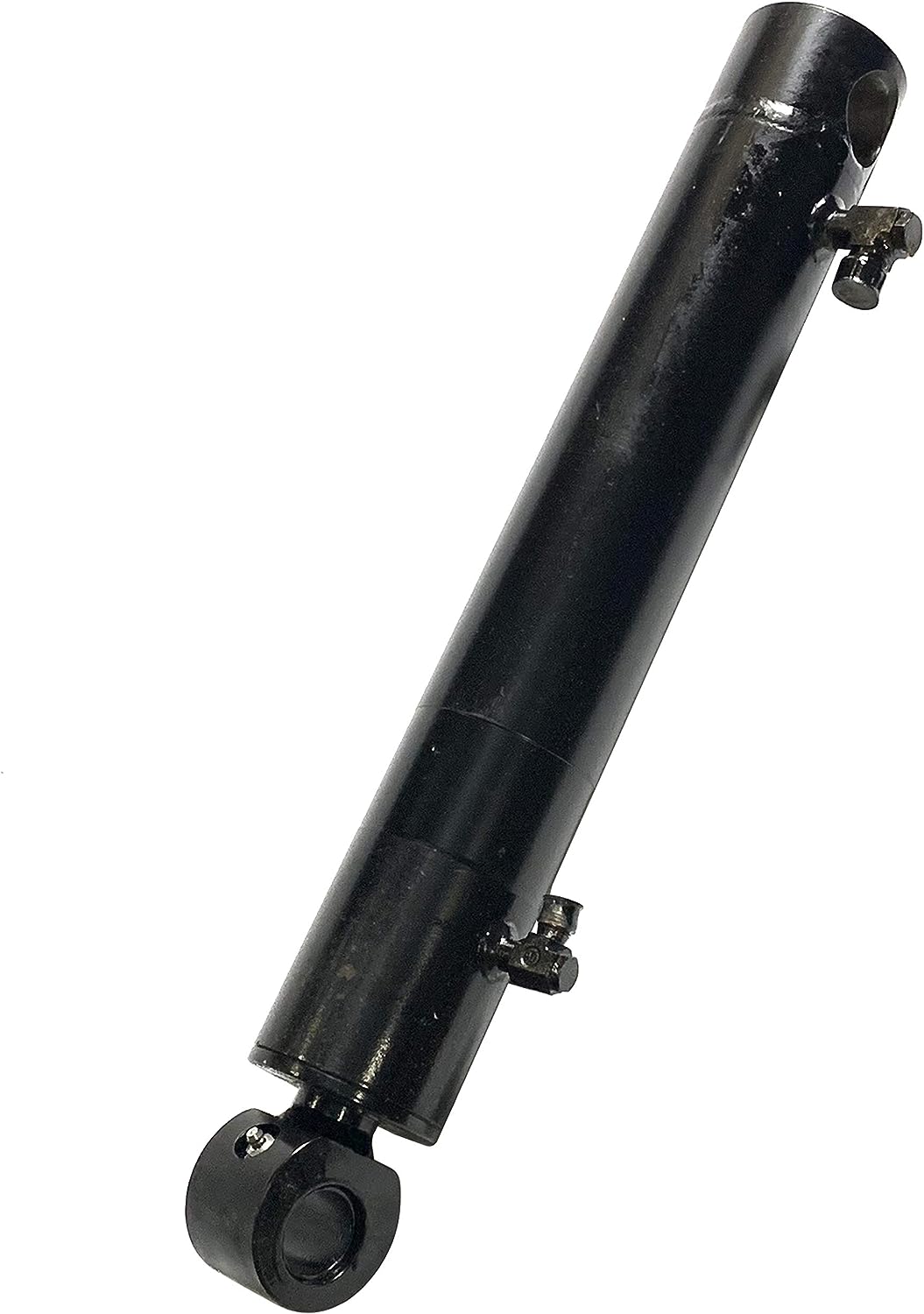Product Description
Special Design Widely Used Small Excavator Hydraulic Bucket Cylinder
Hydraulic Bucket Cylinder
A hydraulic bucket cylinder, or a hydraulic cylinder or hydraulic ram, is a mechanical device used in hydraulic systems to provide linear force and motion. It is commonly used in various applications, including construction, agricultural, and industrial machinery.
The hydraulic bucket cylinder is specifically designed for use in bucket attachments, such as those found on excavators, loaders, or backhoes. It is responsible for extending and retracting the bucket arm to control the movement of the bucket, allowing it to scoop, lift, and dump materials.
Applications of hydraulic cylinder
Here are some key features and components of a hydraulic bucket cylinder:
-
Cylinder body: The cylinder body is a cylindrical tube that houses the piston and other internal components. It is typically made of durable and corrosion-resistant materials such as steel.
-
Piston: The piston is a cylindrical component that moves back and forth inside the cylinder body. It is sealed to create pressure chambers and divides the cylinder into 2 distinct areas: the rod side and the cap side.
-
Rod: The rod, also known as the piston rod or ram, is attached to the piston and extends through a seal at 1 end of the cylinder. It provides the linear motion and force required for the bucket arm movement.
-
Seals: Seals prevent hydraulic fluid leakage and maintain pressure within the cylinder. They are typically made of rubber or other elastomeric materials and are located at various points along the cylinder, including the piston and rod.
-
Ports: Hydraulic fluid enters and exits the cylinder through ports on the cylinder body. These ports are connected to the hydraulic system, allowing pressurized fluid to act on the piston and generate force.
-
Mounting points: Hydraulic bucket cylinders are typically mounted to the equipment's frame or structure using specialized brackets. These brackets provide stability and support for the cylinder during operation.
The hydraulic bucket cylinder uses pressure to extend or retract the piston and rod. When pressurized fluid is supplied to the appropriate port, it causes the piston to move, extending or retracting the rod. This motion is transmitted to the bucket arm, enabling it to perform the desired actions.
How does a hydraulic bucket cylinder work?
A hydraulic bucket cylinder, or a hydraulic cylinder or hydraulic ram, is a mechanical device used in hydraulic systems to provide linear force and motion. It works on the principle of Pascal's law, which states that when pressure is applied to a fluid in a confined space, the pressure is transmitted equally in all directions.
Here's how a hydraulic bucket cylinder works:
1. Hydraulic fluid supply: The hydraulic system supplies pressurized hydraulic fluid, typically oil, to the hydraulic bucket cylinder through an inlet port. This fluid is usually stored in a reservoir and circulated by a pump.
2. Cylinder construction: The hydraulic bucket cylinder consists of a cylinder barrel, a piston, and a piston rod. The cylinder barrel is a cylindrical tube with sealed ends. The piston is a cylindrical component that fits tightly inside the cylinder barrel and divides it into 2 chambers: the rod side (head end) and the cap side (blind end). The piston rod extends from the piston and is attached to the bucket arm.
3. Fluid pressure application: When pressurized hydraulic fluid is supplied to the cylinder's rod side (head end), it pushes against the piston, creating a force that extends the piston rod. The pressure is transmitted evenly across the piston, creating a balanced force.
4. Retraction: To retract the piston rod and move the bucket arm back, the hydraulic fluid is supplied to the cylinder's cap side (blind end). The pressure from the fluid pushes against the opposite side of the piston, causing the piston rod to retract.
5. Control valves: The flow of hydraulic fluid to the cylinder is controlled by hydraulic control valves, which the equipment operator operates. These valves direct the flow of fluid to the appropriate side of the cylinder, enabling precise control of the bucket arm's movement.
6. Sealing: Seals prevent hydraulic fluid leakage and maintain pressure within the cylinder. They are located at various points around the piston and piston rod to ensure a tight seal and prevent fluid from leaking out.
7. Force and motion: As the hydraulic fluid applies pressure to 1 side of the piston, it generates a force that extends or retracts the piston rod. This force is transmitted to the bucket arm, allowing it to move linearly and perform tasks such as scooping, lifting, and dumping materials.
Hydraulic bucket cylinders are widely used in construction machinery, agricultural equipment, and various industrial applications. They provide powerful and precise force transmission, making them essential components in hydraulic systems for heavy-duty tasks.
Our Company
We have a first-class independent R&D platform for assembly. The forklift cylinder production workshop has 4 semi-automatic lifting cylinder assembly lines and 1 fully automatic tilting cylinder assembly line, with a designed annual production capacity of 1 million pieces; the special cylinder workshop is equipped with semi-automatic cleaning and assembly systems of various specifications, with a designed annual production capacity of 200,000 essays. It has famous CNC machining equipment, machining centers, special equipment for high-precision cylinder processing, robot welding machines, automatic cleaning machines, automatic cylinder assembly machines, and automatic paint production lines. We have more than 300 sets of critical equipment running. The optimized allocation and efficient utilization of equipment resources ensure the precision requirements of the products and meet the high standard quality requirements of the products.
|
Forklift cylinder assembly shop |
Other types of cylinder assembly shop |
Welding
Painting & coating
|
Painting & coating line |
Fully automatic water-based |
Testing
To further improve product performance, and establish the leadership position of our hydraulic cylinder in the industry, our company and zjimee jointly established a Comprehensive performance laboratory of hydraulic cylinders, hydraulic valves, and hydraulic pumps; the lab is computer-assisted testing, using electro-hydraulic control technology, the test conditions preset by computer, which improves the test accuracy and system versatility, and the experimental data.
The automatic collection is realized through the application of sensors, and the output data, such as the internal leakage and load efficiency of the cylinder or the valve, are directly processed by the computer and converted to standard units (ml/min; %). At the same time, to ensure the working safety of the hydraulic system, the state monitoring function is carried out for key performance parameters, such as "oil temperature monitoring, liquid level monitoring, filter device monitoring," etc. Among them, the hydraulic cylinder test stand can test the performance of "load efficiency" and "internal leakage" by readings. At the same time, it is equipped with a grating ruler measuring instrument, which meets the requirements of all test items of hydraulic cylinder products in the national standard.
Our Factory
Packaging & Shipping
| Certification: | GS, RoHS, CE, ISO9001 |
|---|---|
| Pressure: | High Pressure |
| Work Temperature: | Normal Temperature |
| Acting Way: | Double Acting |
| Working Method: | Rotary |
| Adjusted Form: | Regulated Type |

How does a tilt cylinder contribute to precise equipment positioning?
A tilt cylinder plays a crucial role in achieving precise equipment positioning. It provides the necessary force and control to adjust the tilt angle of the equipment, allowing operators to position it accurately for various tasks. Here's a detailed explanation:
- Tilt Angle Adjustment: A tilt cylinder allows operators to adjust the tilt angle of the equipment. By actuating the cylinder, they can tilt the equipment forwards or backwards, facilitating precise positioning. The ability to fine-tune the tilt angle enables operators to align the equipment with specific targets or work areas, ensuring optimal accuracy and efficiency.
- Load Distribution: Precise equipment positioning is essential for maintaining proper load distribution. A tilt cylinder allows operators to adjust the tilt angle to distribute the load evenly across the equipment. This is especially important when handling uneven or imbalanced loads. By achieving precise positioning through tilt cylinder control, operators can optimize load distribution, minimize stress on the equipment, and enhance stability during operation.
- Contour Adaptation: In certain applications, such as land grading or earthmoving, precise equipment positioning is necessary to adapt to the contours of the terrain. A tilt cylinder enables operators to adjust the equipment's tilt angle to match the slope or shape of the ground. This contour adaptation capability ensures consistent contact with the surface, promoting uniform grading or excavation and achieving the desired results with precision.
- Height Adjustment: Some tilt cylinders also allow for height adjustment in addition to tilt angle adjustment. By extending or retracting the cylinder, operators can raise or lower the equipment's position. This height adjustment capability further enhances precise positioning, enabling operators to align the equipment at the desired elevation for specific tasks or working conditions.
- Integration with Control Systems: Tilt cylinders can be integrated with advanced control systems in modern equipment. These control systems may include electronic or hydraulic controls that allow for precise and automated tilt angle adjustments. By utilizing such systems, operators can achieve highly accurate and consistent equipment positioning, reducing human error and improving overall productivity.
- Operator Feedback: Tilt cylinders equipped with sensors or feedback mechanisms can provide real-time information to operators about the equipment's tilt angle. This feedback allows operators to make precise adjustments and ensure accurate positioning. By continuously monitoring the tilt angle, operators can maintain the desired position during operation and make necessary corrections as needed.
Therefore, a tilt cylinder contributes significantly to precise equipment positioning by enabling tilt angle adjustment, load distribution optimization, contour adaptation, height adjustment, integration with control systems, and operator feedback. These capabilities enhance the accuracy, efficiency, and versatility of equipment in various industries, including construction, material handling, agriculture, and more.

How does a tilt cylinder handle variations in tilt angle and load?
A tilt cylinder is designed to handle variations in tilt angle and load to ensure optimal performance and safe operation. It employs various mechanisms and features that allow it to adapt to different angles and loads. Here's a detailed explanation:
- Adjustable Force and Stroke: Tilt cylinders can be adjusted to accommodate variations in tilt angle and load. The force generated by the cylinder can be controlled by adjusting the hydraulic pressure, allowing for precise control over the tilting movement. Similarly, the stroke length of the cylinder can be customized to provide the desired range of motion, enabling flexibility in achieving different tilt angles.
- Flow Control Valves: Tilt cylinders often incorporate flow control valves that regulate the speed and rate of hydraulic fluid flow. These valves allow operators to adjust the flow rate, providing finer control over the tilting movement. By adjusting the flow control valves, operators can handle variations in tilt angle and load with greater precision and stability.
- Load-Sensing Technology: Some advanced tilt cylinders utilize load-sensing technology to automatically adjust the force output based on the load applied. Load sensors integrated into the cylinder or the hydraulic system provide real-time feedback on the load, enabling the cylinder to adjust its force accordingly. This ensures consistent and safe operation, even when dealing with varying loads.
- Structural Integrity: Tilt cylinders are designed with robust construction to handle variations in load. The materials used, such as high-strength steel, provide structural integrity and durability. The cylinder's design considers factors such as bending moments and stress distribution to ensure safe operation under different load conditions.
- Seals and Lubrication: Tilt cylinders incorporate seals and lubrication systems to minimize friction and maintain the required performance. Seals prevent leakage and contamination, ensuring the hydraulic system operates efficiently. Proper lubrication reduces wear and tear on moving parts, allowing the cylinder to handle variations in tilt angle and load smoothly and reliably.
- Stability and Balance: Tilt cylinders are designed to maintain stability and balance during tilting operations. The cylinder's attachment points, along with the equipment's center of gravity, are carefully considered to ensure safe and controlled tilting. This helps prevent instability or tipping when facing variations in tilt angle or load.
By incorporating adjustable force and stroke, flow control valves, load-sensing technology, robust construction, seals and lubrication, as well as ensuring stability and balance, tilt cylinders can effectively handle variations in tilt angle and load. These features enable precise control, safe operation, and reliable performance in a wide range of applications across industries.

Can you explain the role of hydraulic fluid in a tilt cylinder?
Hydraulic fluid plays a crucial role in the operation of a tilt cylinder. It is an essential medium that enables the transfer of force and controls the movement of the cylinder. Here's a detailed explanation of the role of hydraulic fluid in a tilt cylinder:
- Force Transmission: Hydraulic fluid is used to transmit force from the hydraulic system to the tilt cylinder. The hydraulic system pressurizes the fluid, creating hydraulic pressure that acts on the surface of the piston. This pressure imbalance generates a force that moves the piston and, in turn, extends or retracts the rod of the tilt cylinder. The force transmitted through the hydraulic fluid allows for controlled tilting of the attached component in heavy machinery.
- Flow Control: Hydraulic fluid is responsible for controlling the flow of force within the tilt cylinder. The hydraulic system uses control valves to regulate the flow and direction of the fluid. By adjusting the position of the control valves, the operator can control the speed, direction, and extent of the tilting movement. This flow control mechanism enables precise positioning and adjustment of the tilted component according to the specific task requirements.
- Pressure Regulation: Hydraulic fluid also allows for the regulation of pressure within the tilt cylinder. The hydraulic system incorporates pressure regulators or relief valves to maintain the desired pressure levels. These valves ensure that the hydraulic fluid pressure remains within the safe operating range, preventing excessive pressure buildup that could damage the cylinder or other components. Pressure regulation contributes to the safe and efficient operation of the tilt cylinder.
- Lubrication and Cooling: Hydraulic fluid serves as a lubricant within the tilt cylinder, reducing friction between moving components. This lubrication minimizes wear and tear, extending the lifespan of the cylinder. Additionally, the hydraulic fluid absorbs and dissipates heat generated during operation, acting as a coolant. Effective lubrication and cooling contribute to the overall performance and durability of the tilt cylinder.
- Sealing and Contamination Prevention: Hydraulic fluid helps maintain the integrity of the tilt cylinder's hydraulic seals. The fluid creates a seal between the piston and cylinder wall, preventing hydraulic fluid leakage. It also acts as a barrier, preventing contaminants such as dirt, debris, or moisture from entering the cylinder and potentially causing damage. This sealing and contamination prevention function ensures the proper functioning and longevity of the tilt cylinder.
In summary, hydraulic fluid plays a multifaceted role in a tilt cylinder. It transmits force, controls the flow and pressure, provides lubrication and cooling, seals the cylinder, and prevents contamination. By utilizing hydraulic fluid effectively, the tilt cylinder enables controlled tilting of components in heavy machinery, ensuring precise operation, and enhancing the performance and reliability of the equipment.


editor by CX 2023-12-09